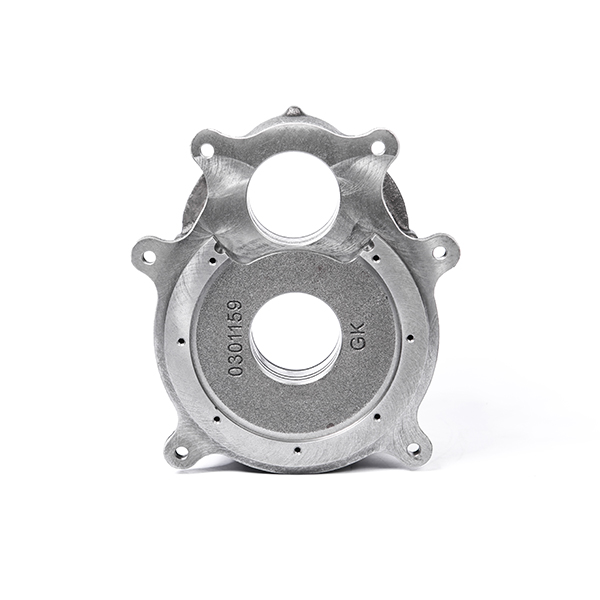Mobile:+86-311-808-126-83
Email:info@ydcastings.com
Gearbox Understanding the Function and Importance of Gearboxes in Industrial Machinery
Gearboxes are vital in industrial machinery, transferring power from motors to mechanical equipment. They increase torque while reducing rotational speed, enabling precise and efficient heavy-duty tasks. In this post, we’ll explore their function, importance, and various types commonly used in industrial settings. Let’s dive in and discover the significance of gearboxes in industrial applications.
Gearbox Housing
How Gearboxes Work: An In-Depth Look
Gearboxes work by using a series of gears to transmit power from the motor to the desired equipment. The gears inside a gearbox are specifically designed with different sizes and numbers of teeth, allowing for the transfer of power at varying speeds and torques. This allows for gearbox efficiency and backlash to be controlled, ensuring that the equipment operates smoothly and without any sudden jolts or movements. The gears in a gearbox are constantly meshing together, creating a continuous flow of power from the motor to the equipment being driven. This process is facilitated by lubrication, which reduces friction and wear on the gears, ensuring their longevity and optimal performance.
The Importance of Gearboxes
Gearboxes are often referred to as the backbone of industrial machinery, and for good reason. Without them, many machines would not be able to perform their intended tasks efficiently or at all. Their ability to transfer power in a controlled manner is crucial in ensuring that equipment can operate smoothly and precisely. Gearboxes also help increase torque, allowing machines to handle heavy loads with ease. This makes them an essential component in various industries, from manufacturing and construction to transportation and mining. With advancements in technology, gearboxes have become even more crucial in modern industrial machinery, contributing to increased productivity and improved overall performance. Without gearboxes, the functioning of industrial machinery would be greatly hindered, showcasing their importance in this sector.
Types of Gearboxes and Their Applications
There are several types of gearboxes used in industrial machinery, each with its unique features and applications. One of the most commonly used is the spur gearbox, which uses parallel shafts and straight-cut gears to transfer power with high efficiency. It is often used in low-speed applications such as conveyors, pumps, and small electric motors. Another type is the helical gearbox, which uses helical gears to transfer power more quietly and smoothly than spur gearboxes. This makes it ideal for high-speed applications such as turbines, compressors, and agitators. Other types include bevel gearboxes for transferring power at angles, worm gearboxes for high torque applications, and planetary gearboxes for precision control in servo motors and robotics. Each type of gearbox has its unique applications, making them essential for various industrial processes.
Key Features to Consider When Choosing a Gearbox for Your Machinery
When choosing a gearbox for your industrial machinery, there are several key features to consider. These include the gear ratio, load capacity, efficiency, and backlash control. The gear ratio is vital as it determines the speed and torque output of the gearbox, which must be suitable for the specific application. The load capacity refers to the maximum amount of weight or force that can be handled by the gearbox, which is crucial in ensuring its durability and longevity. Efficiency is also important as it affects the energy consumption and overall performance of the machinery. Lastly, backlash control is essential in maintaining precision and avoiding sudden movements or jolts, especially in high-speed applications.
Maintenance and Troubleshooting Tips for Gearboxes
Proper maintenance includes regular lubrication, monitoring for any signs of wear or damage, and timely replacements when necessary. Moreover, it is important to follow manufacturer guidelines and recommendations for specific types of gearboxes to ensure their proper functioning. In case of any issues, troubleshooting may be necessary to identify and resolve the problem. This can include checking for leaks, unusual noises, or changes in performance. In some cases, it may require dismantling the gearbox and inspecting individual components. Having a trained professional handle these tasks is crucial in avoiding further damage or accidents.
Innovations in Gearbox Technology
As technology continues to advance, so does the innovation in gearbox technology. One of the most exciting developments on the horizon is the use of 3D printing to create custom gearboxes for specific industrial applications. This will not only improve efficiency and performance but also reduce costs and lead times for production. Furthermore, there are ongoing efforts to improve lubrication systems and materials used in gearboxes to further increase their durability and reduce maintenance needs. With these advancements, the future of gearbox technology looks promising and will only continue to enhance the functioning and importance of industrial machinery in various industries.
Gearboxes are crucial components in industrial machinery, efficiently transferring power from motors to mechanical equipment. With various types and applications, they are essential in modern factories, contributing to increased productivity. Ongoing innovations in gearbox design drive their importance and advancement, making them the backbone of industrial machinery. Let’s appreciate their significance and evolving technology.
-
Why Should You Invest in Superior Pump Castings for Your Equipment?NewsJun.09,2025
-
Unlock Performance Potential with Stainless Impellers and Aluminum End CapsNewsJun.09,2025
-
Revolutionize Your Machinery with Superior Cast Iron and Aluminum ComponentsNewsJun.09,2025
-
Revolutionize Fluid Dynamics with Premium Pump ComponentsNewsJun.09,2025
-
Optimizing Industrial Systems with Essential Valve ComponentsNewsJun.09,2025
-
Elevate Grid Efficiency with High-Precision Power CastingsNewsJun.09,2025












